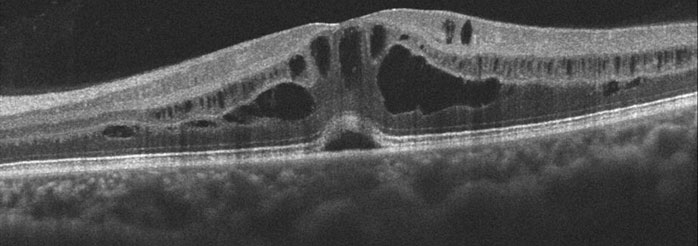What is CME?
Cystoid macular edema is a swelling of the central macula, the portion of the retina responsible for our straight-ahead vision. It causes painless central vision blurriness or distortion. There are numerous causes, including eye inflammation (iritis, uveitis and pars planitis), diabetes, hypertensive retinopathy, retinal vein occlusion, and following cataract surgery.

Normal retina

CME causes the central macular tissue to swell with fluid-filled cysts
How is CME treated?
The treatment for CME varies depending on the underlying cause. Treating the intraocular inflammation in uveitis will usually help the CME. Click here for how edema treated in eyes with diabetes or here for how it is treated in eyes with retinal vein occlusions.
CME following cataract surgery is extremely common and is often asymptomatic, resolving on its own within weeks to months. For patients with symptomatic CME, anti-inflammatory drops or injections are usually successful. Treatment may have to be given for several months. Patients usually recover good vision once the CME resolves.
View more retina images at Retina Rocks, the world’s largest online multimedia retina image library and bibliography repository.



